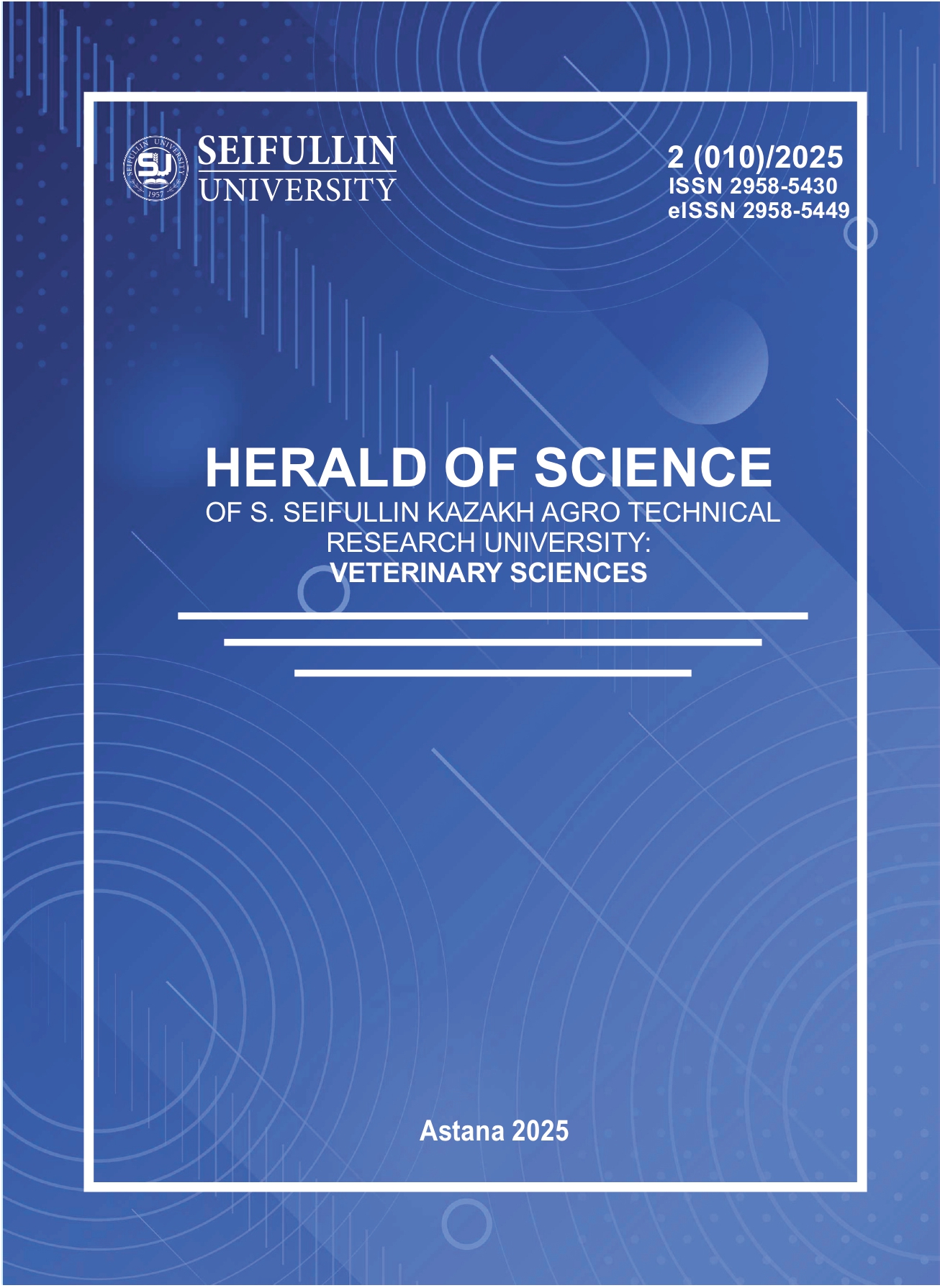Episotological monitoring of brucellosis of large and small cattle in the Pavlodar Region of the Republic of Kazakhstan
DOI:
https://doi.org/10.51452/kazatuvc.2025.2(010).1871Keywords:
brucellosis; diagnostic tests; epizootic map; epizootic surveillance; morbidity.Abstract
Background and Aim. Despite the efforts to eliminate brucellosis in the Pavlodar region, its local epizootics remain a huge concern. The aim of this work was to conduct epizootic surveillance and analyze the epizootiological situation with animal brucellosis in the Pavlodar region in 2019-2023.
Materials and Methods. The materials used in this study include the official reports of the Committee for Veterinary Control and Supervision of the Ministry of Agriculture of the Republic of Kazakhstan (CVCS of MoA of RK), the Republican Anti-epizootic Unit (RSI RAU), the regional branch of the Republican Veterinary Laboratory (RVL), the Republican State Enterprise on the rights of economic management “Scientific and Practical Centre for Sanitary and Epidemiological Expertise and Monitoring” of the Ministry of Public Health of the Republic of Kazakhstan (RSE SPC SEEaM of MoPH of RK), and the results of our own epizootiological research. The research methods used in the study are in full compliance with the official guidelines for diagnosing brucellosis in animals.
Results. We have established the leading role of cattle and small ruminants in the epizootiology of brucellosis, identified the most significant factors promoting brucellosis persistence in livestock and ascertained the occurrence of the infection in the human population in every district of the region. Using the epizootic surveillance data acquired over the past 5 years, we have identified areas with high, moderate and low incidence of animal brucellosis, as well as disease-free zones, and constructed an epizootic map that can be used to implement adequate interventions.
Conclusion. Epizootic surveillance, coupled with the analysis of dynamics of brucellosis spread to new sites, its incidence in livestock and the results of screening tests, will facilitate epizootic control and help to elaborate a methodologically sound strategy for implementing adequate interventions.

